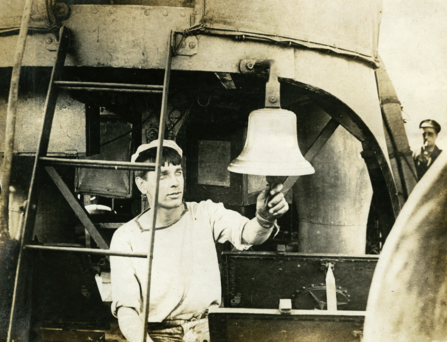Back

Collections
England & Wales Merchant Navy Crew Lists 1861-1913
These crew lists and agreements from archives and record offices across England and Wales reveal details about the people who lived on the open seas as part of the Merchant Navy. The records cover many born throughout the United Kingdom, Ireland and farther afield. Furthermore, the records include the names of over 700 “Lascars” from Asia and the Indian subcontinent.

- Date range
- 1861-1913
- Records
- 705,945
- Images
- 54,417
About this collection
The Merchant Navy is comprised of private organisations of commercial and trading ships. It was not regulated by the government until the 19th century. The Merchant Shipping Act of 1835 replaced Muster books with agreements and crew lists which were filed at the Registrar General of Shipping and Seamen (previously known as the Register Office of Merchant Seamen). The title, Merchant Navy, was given to the service after the First World War by King George V, in recognition of their maintenance of trade during the war and assisting with civilian’s dependence for raw materials and food. They also helped to transport soldiers.
The crew lists and agreements in this collection come from repositories including The National Archives, National Maritime Museum and local archives and county record offices. There are images for roughly 30% of the entries. These records include agreements from both home trade and foreign trade ships. Home trade ships submitted agreements twice a year and the foreign trade ship agreements were only submitted at the end of a voyage. They do not cover the Royal Navy or provide details of passengers. During the First World War ships and crew were taken as Prisoners of War.
Crew members include a wide variety of professions, such as deckhands, engine staff, stewards, nurses and maids. The crew lists are only for British merchant ships. The records document the employment of each member of the crew. Individuals would ‘sign on’ when they began their employment, either at the start of the voyage, or when they joined the ship at one of its ports of call. They ‘signed off’ at the end of the voyage or, if they chose not to finish, at a port of call.
- Anglesey Archives
- Crew List Index Project
- National Maritime Museum
- Portsmouth Library & Archive Service
- South West Heritage Trust
- The National Archives, Kew, London, UK
Record series includes
Lascars
Lascars is a term used by Europeans usually to refer to Indian seamen who served on British ships; however, it has been used for other Asian, African and other foreign seamen. We can discover Lascars by their recorded Role on the vessel. Large numbers of Lascars were contracted for British ships because of their knowledge of the local area and skills. However, they were usually paid less than the British seamen employed and were often treated poorly. The life of a Lascar is described in the historic novel Sea of Poppies by Amitav Ghosh.
The Navigation Act of 1660 restricted the employment of non-English seamen. This act meant that many Lascars who arrived in England from India could not be re-employed on a British ship back to India, therefore they were abandoned and left to fend for themselves. It was repealed in 1849. Over the years, this practice led to the creation of specialised hostels, seamen’s homes and charitable organisations. Many of the seamen who were stranded in England began to settle, create their own communities and became part of British society. By the 1890s an estimated 12,000 Lascars had settled in Britain.
Part of these records are created from the Crew List Index Project (CLIP), which aims to improve access to the records of British merchant seamen for the late 19th century by indexing records from local record offices throughout the UK. The task is ongoing, and volunteer transcribers and checkers are encouraged to get involved. A crew list holds the details of every crew member on board a British merchant ship.
Try the Social History Archive.